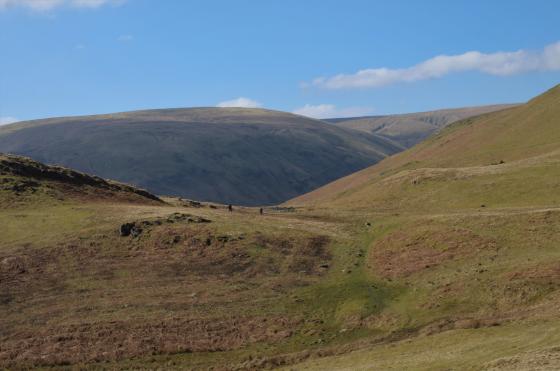



Don’t fence me in!
Although this large stone is a couple of miles from White Hag I have included it as it is on the approaches to the site.
The stone is a large Shap granite boulder (as are most of the other Thunder Stones in the Shap area). This chap has been built into the farm wall and lies on the Roman Road just after the junction with the Orton to Shap road.
It’s a sad stone, not only is it built into a wall but it then has the further indignity of having a barbed wire fence built across it and various items of rubbish strewn around it including an old tyre and an abandoned car.
The quality of these stones is a species of granite, reddish, and full of large white shining specks of spar-like appearance. When polished, some of them are veined, and have an ornamental appearance. There is no regularity in their shape, and few of them present sharp angles; indeed for the most part they seem from their rounded forms to have been long subjected to the action of water.
This species of stone is called by the country-folk thunder-stone, but upon what authority seems a matter of much doubt. I have heard the inhabitants assign two reasons – one, that the stones have fallen from the clouds during thunder-storms; and the other in consequence of their giving out sparks of fire when struck against each other, at the same time emitting a faint smell of sulphur. But in fact the great majority of the people would not be able to assign any reason for so singular a name, not troubling themselves to inquire into the origin of names.
This species of stone is very scarce in that part of the country; indeed, where the stones are found at all, they are mostly found singly, and at great distances from each other; and from an intimate acquaintance with the whole neighbourhood, I feel quite sure that the Druid stones could not be replaced from a surrounding district of very considerable extent. From whence they were brought to the situations they so long occupied [before many of them were blown up, that is], I have never even heard conjectured; that no human means were used to place them in their relative positions would be an opinion too wild to be hazarded.
From ‘The Druid Stones near Shap, in Westmorland’, in the Kendal Mercury, 18th April 1840.














































































